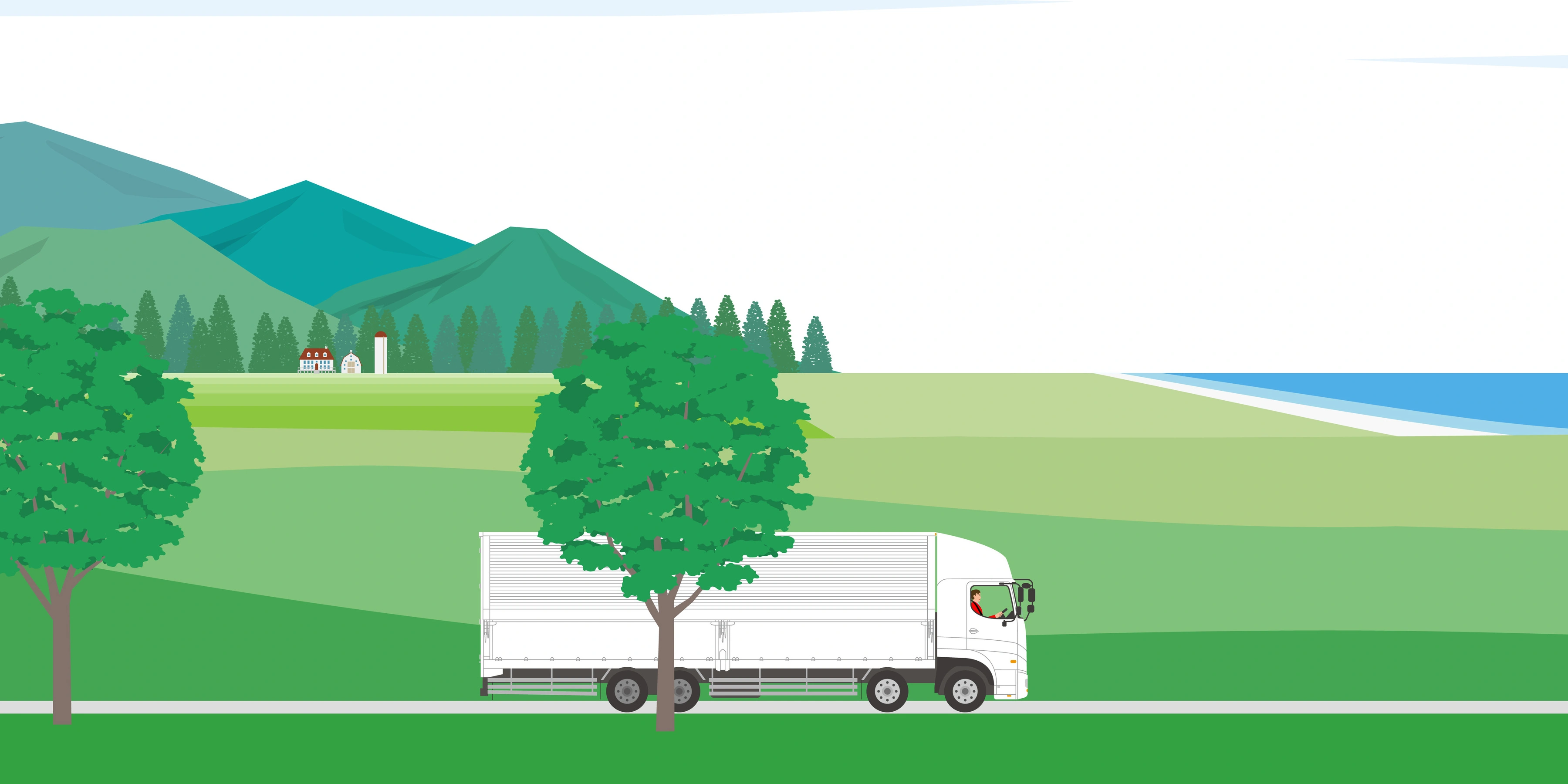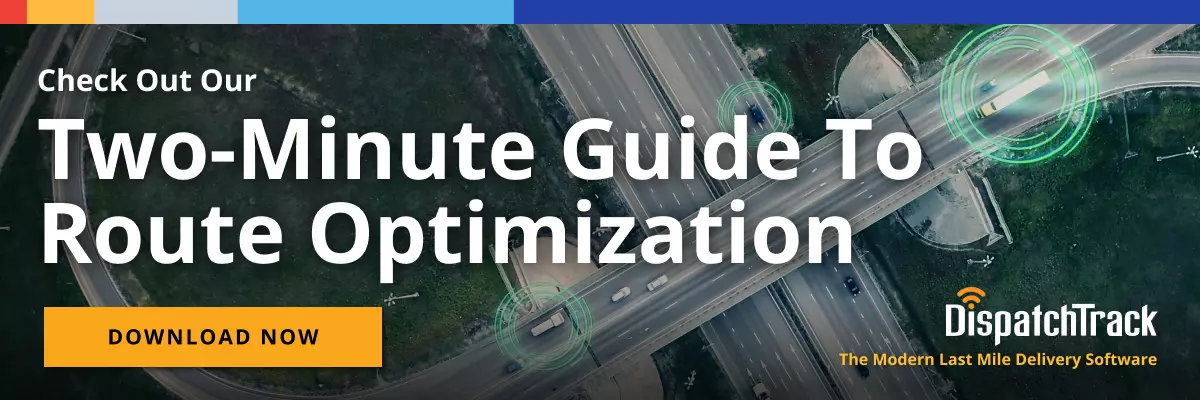It’s no secret that your customers—whether they be end consumers or other businesses—are increasingly going to factor sustainability into their decisions about who to buy from and who to partner with. DispatchTrack’s own consumer research has shown that half of end consumers already consider carbon footprints when making delivery choices, and the number interested in green logistics is only going to increase.

That’s just one of the reasons that retailers, wholesalers, and other businesses are starting to feel the urgency around decreasing carbon emissions throughout the delivery process. Of course, shrinking your carbon footprint isn’t like flipping a switch—it requires quickly getting up to speed on how the supply chain produces carbon emissions and gaining a new understanding of the role that technology plays in decreasing your carbon footprint.
Luckily, there’s a lot that the right delivery management technology can do to help with the seemingly Herculean task of quantifying your current emissions and working to decrease them. The trick is to find a green logistics platform that offers the right delivery management tools.
What to Look for in a Green Logistics Platform
Emissions Tracking Over Time
This might go without saying, but any platform that you’re considering leveraging to help with green logistics efforts needs to give you the ability to easily track your carbon emissions from deliveries over time. To make this possible, you need a solution that offers the ability to effectively track every delivery run from end to end and capture a complete and accurate picture of how many miles your drivers covered, how much time they spent idling, and more. To make all that happen, you need a single platform that can handle GPS tracking, telematics integration, and configurable reporting with options for CO2 tracking—not an impossible ask, but important boxes to tick off.
Emissions Tracking by Vehicle Type
The complexity of last mile deliveries makes it challenging to actually keep tabs on your emissions in more ways than one. For instance, different vehicles, vehicle types, and vehicle loads emit different amounts of CO2 per mile. This is partially a matter of the fuel economy of the vehicles in question, but also it also varies based on how much weight the vehicle is carrying. In order to track emissions accurately, your platform needs to give you the ability to configure the emissions for different loads and vehicle types within the platform.
CO2 per Stop
In order to decrease overall emissions, you need to be able to understand how your carbon footprint is being produced from a number of different angles and on a fairly granular level. That’s why it’s important to seek out a solution that empowers you to visualize CO2 emissions for each individual stop during the route planning stage. Without this kind of granular insight, it can be difficult to translate higher level analytics (e.g. CO2 per route) into the kinds of actionable, data-driven decisions that need to get made on a tactical level in order to reduce CO2 output. Ideally, your platform would show you this information within the routing console as you’re developing and finalizing your route plans for the day.
CO2 per Route
By the same token, it’s helpful to be able to see the carbon impact of an entire route at a single glance. When your final mile delivery software automatically shows you this information, you can make more informed tactical decisions while you’re routing and dispatching orders. This is an important puzzle piece in the larger sustainability puzzle. Why? Because it empowers your planners with a predictive element that can be paired with after-the-fact reporting. Instead of waiting until days later to run a report and find out how carbon efficient your delivery runs for a particular day were, you can predict what the CO2 impact of a run is before it happens. This means that within the route planning stage you can test different options and choose the one that has the lowest emissions.
Route Optimization
The two sections above raise an important question: even when you’re able to predict CO2 emissions relatively accurately before a run takes place, how do you actually reduce them? The simple answer is: drive fewer miles. After all, CO2 emissions scale directly with fuel consumption which—while it’s obviously impacted by things like idling and truck loads—basically comes down to the number of miles you’re driving.
To shorten the number of miles you’re driving each day on a consistent basis, the only realistic option is to leverage advanced, ideally AI-powered delivery route optimization software to generate the most efficient possible routes automatically. When you’re trying to route by hand, it becomes impossible to find the short routes after a certain level of complexity—introduce more than a few trucks and even a few time window parameters and developing a route that even rises to the standard of workable becomes a challenge.
At the same time, many legacy routing software options don’t give enterprises the capabilities they need to route through complexity. The result is routes that aren’t just inefficient in their use of capacity, but are actually much less sustainable.
But when you can utilize AI and machine learning to optimize routes based on time window requests, driver skill, historical traffic patterns, and more, you avoid these pitfalls by cutting through the complexity to find efficient routes anyway. At the end of the day, this is going to be one of your most powerful tools on the path to sustainability.
Customer Communications
Driving fewer miles, of course, isn’t just a matter of planning the shortest possible routes. It’s a matter of planning routes and actually executing them. More specifically, it’s a matter of having a high first attempt delivery success rate. After all, any time you fail to complete a delivery on the first try, you’ve essentially wasted all those miles driven and all the CO2 that comes with them.
But how do you actually improve your delivery success rate? There are a number of different tactics you can leverage, but one of the most impactful is to send real time delivery updates and notifications early and often to your customers. Simply put, when your customers know when to expect a delivery, they’re more likely to either be home to meet the truck or reach out to let you know that they need to reschedule. In this way, you can avoid having to drive those same miles again the next day. Here, it’s valuable to find a platform that offers not just automated texts and emails, but a full-fledged customer order tracking portal with detailed real-time information about the delivery.
Self Scheduling
Like we said at the beginning of this post, sustainability efforts in last mile logistics are going to be driven at least in part by customers and customer engagement. For that reason, it’s also important to find ways to bring customers into the sustainability process. This can take a number of different forms, but one option is to find a platform that enables you to offer customers green self scheduling options. In this scenario, if you’re already calculating CO2 emissions per stop in the planning stage, you can present your customers a list of potential time slots with CO2 estimates attached to each one, empowering them to choose the option with the least emissions.
Achieving greener last mile deliveries isn’t going to be a one-and-done process—rather, it’s going to take extended time and effort on the part of planners, IT teams, and other stakeholders. But the right platform can provide a strong foundation for decreasing your carbon footprint across your last mile delivery operations.
